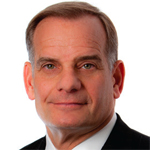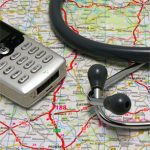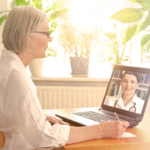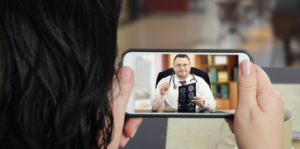
verbaska / shutterstock.com
Dominick Sudano, MD, an assistant professor at the University of Arizona and rheumatologist at Banner University Medical Center, Tucson, Ariz., knows how tough it is for patients living in remote areas to obtain a rheumatology consultation.
“It’s not unusual for patients living in rural areas of Arizona to wait four to six months for a rheumatology consult and then drive 50–100 miles to an appointment,” says Dr. Sudano, who adds that long distances and wait times often result in delays in diagnosis and treatment, as well as insufficient disease management.
According to the Centers for Disease Control and Prevention (CDC), one-third of adults in the most rural areas of the U.S. have a form of arthritis, including fibromyalgia, rheumatoid arthritis and osteoarthritis.1 In the new Rheumatic Disease Report Card: Raising the Grade on Rheumatology Care in America, released in September 2018 by the ACR’s Simple Tasks awareness campaign, Arizona received an overall C grade.2 The report card assigns letter grades to states according to their progress in providing adequate access to rheumatology care, ensuring rheumatic disease care is affordable and encouraging healthy lifestyle habits that ease the burden of rheumatic disease.
With Arizona receiving a D in both access and affordability, the report card went on to say action is needed to improve quality of life for people in Arizona who live with rheumatic diseases.
Dr. Sudano is working toward that change by leading a telemedicine-based ECHO (Extension for Community Healthcare Outcomes) program at the University of Arizona, employing expansion techniques and telemedicine. Beginning in September 2017, Dr. Sudano has met with 30 primary care providers via webinars for two hours each month. This forum allows regional medical staff to ask questions, learn about best practices for treating many rheumatic conditions and obtain consults on difficult-to-treat cases.
Expanding the Scope of Care
Improving access to specialty care for those with rheumatic diseases remains an ongoing challenge. Experts say rheumatologists are in short supply in the U.S., and the aging baby boomer population, combined with many rheumatologists reaching retirement age, is expected to make access to care even more scarce. A summary of the ACR Workforce Study in Arthritis & Rheumatology found that as of 2015, patient demand for rheumatologists exceeded clinician supply by the equivalent of 700 full-time providers.3 The study goes on to predict the shortage will only worsen by 2030.
The solution, according to the study, is to look at innovative ways to expand the rheumatology workforce. This includes workforce expansion techniques, such as care provided by nurse practitioners and physician assistants (see story on p. 18), and the use of telemedicine.
In 2018, Amy Waer, MD, medical director of the Arizona Telemedicine Program (ATP), was awarded an educational grant from Eli Lilly to launch a pilot ECHO program. The program was designed to train primary care physicians in remote locations how to diagnose and treat rheumatic diseases. Arizona has one of the lowest concentrations of rheumatologists in the country, with only one practicing rheumatologist for every 139,000 people (as opposed to Maryland and Massachusetts, which have one rheumatologist for every 20,000 people).
“We [the ATP, the University of Arizona College of Medicine and the University of Arizona Center for Rural Health], wanted to see if there was a way to make rheumatology consults more accessible in outlying areas,” Dr. Sudano says. “We’re training staff at rural clinics how to triage rheumatic disease cases, and to facilitate early referral and management.
“Our hope is that community clinicians will increase their knowledge of rheumatology and feel comfortable treating these patients in their own communities,” Dr. Sudano says. “They would still refer complex cases to a rheumatologist, but the wait should be shorter, since more cases could be treated on a local basis.”
The Arizona Rheumatology program is part of Project ECHO, a guided practice telemedicine model launched in 2003 by Sanjeev Arora, MD, a liver specialist at the University of New Mexico (UNM) Health Sciences Center, Albuquerque. Dr. Arora launched Project ECHO after seeing that many patients with hepatitis C weren’t getting the care they needed because of a lack of specialists.
In 2016, President Obama signed into law the bipartisan bill S.2873, the ECHO Act, to expand Project ECHO nationwide.4 Today, Project ECHO continues its mission of developing the capacity of primary care physicians to safely and effectively manage chronic medical conditions within their communities. The ECHO model is expanding across disease and specialty areas and is now used in more than 130 hubs in the U.S., as well as in 23 other countries. In addition to rheumatology, ECHO programs focus on asthma, geriatrics, substance abuse, obesity and more.
Three years ago, Bone Health TeleECHO, a weekly online videoconference, was launched at UNM to link experts and learners with a focus on presentations and discussions of real but de-identified patients with skeletal disorders. A typical online clinic involves 35–40 participants, and continuing medical education credits are offered at no cost.
For rheumatologists who enjoy sharing their knowledge through teaching, Bone Health TeleECHO provides a platform for doing so. The ECHO Institute at UNM provides support, at no cost, for the development of TeleECHO clinics worldwide.
Engaging Physicians, PAs & Nurses
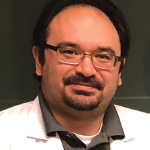
Dr. Sudano
“Our goal is to share expertise in the rheumatology field by training primary care physicians, nurse practitioners and physician assistants to feel more confident in diagnosing and treating rheumatic conditions,” Dr. Sudano says. “We’re educating primary care providers about rheumatic diseases while also improving patient care for patients in Arizona.”
UNM has operated a Rheumatology ECHO program since 2006 under the leadership of Arthur Bankhurst, MD, a distinguished professor of medicine and the division chief of rheumatology at the UNM School of Medicine. The UNM program provides training to clinicians on common rheumatic conditions via weekly teleconferences.
Datcha Dorvil, DO, an internist in Winslow, Ariz., participated in Dr. Sudano’s pilot program. “The Rheumatology ECHO program provided me with a great resource for questions and further education on rheumatology diseases,” Dr. Dorvil says. “Each telemedicine session usually starts off with one or two case presentations by rheumatology fellows or participants, a discussion and questions about the case, and then a formal lecture on a rheumatology topic, followed by questions.”
Dr. Dorvil found the ECHO project to be a great resource for physicians like herself who practice in rural areas. She says the training expanded her knowledge of rheumatic diseases, while also teaching the best autoimmune labs to order and their specificity/sensitivity.
“In addition, I learned about fibromyalgia diagnosis and treatment options, the role of vitamin D deficiency in chronic pain and autoimmune diseases, and how to monitor labs [and] side effects and non-pharmaceutical therapies in chronic pain [and] autoimmune diseases,” Dr. Dorvil says. “The Rheumatology ECHO program gives primary care providers more tools to utilize in caring for patients. I feel more comfortable now managing some of my complex rheumatology patients.”
Shubha Kollampare, MBBS, contributed to the project as a fellow at the University of Arizona College of Medicine, Tucson by presenting cases on rheumatoid arthritis, systemic lupus erythematosus and osteoarthritis. “Although the goal was to help staff at remote medical clinics better diagnose and treat rheumatic diseases, preparing for the webinars also helped me develop a better grasp and understanding of rheumatology,” she says.
The initial pilot project ended in June 2018, but Dr. Sudano says he and his colleagues are working to secure funding to extend the Rheumatology ECHO project. He hopes to expand both the scope of the program and the number of providers who participate. Any healthcare provider in Arizona with an interest in rheumatology is invited to join. Register here.
Linda Childers is a health writer located in the San Francisco Bay Area.
References
- Arthritis in rural America. Centers for Disease Control & Prevention. (n.d.).
- Rheumatic disease report card: Raising the grade on rheumatology care in America. American College of Rheumatology. 2018..
- Bolster MB, Bass AR, Hausmann JS, et al. 2015 American College of Rheumatology workforce study: The role of graduate medical education in adult rheumatology. Arthritis Rheumatol. 2018 Jun;70(6):817–825.
- Public Law No: 114-270. Expanding Capacity for Health Outcomes Act (ECHO Act). 2016 Dec 14.
